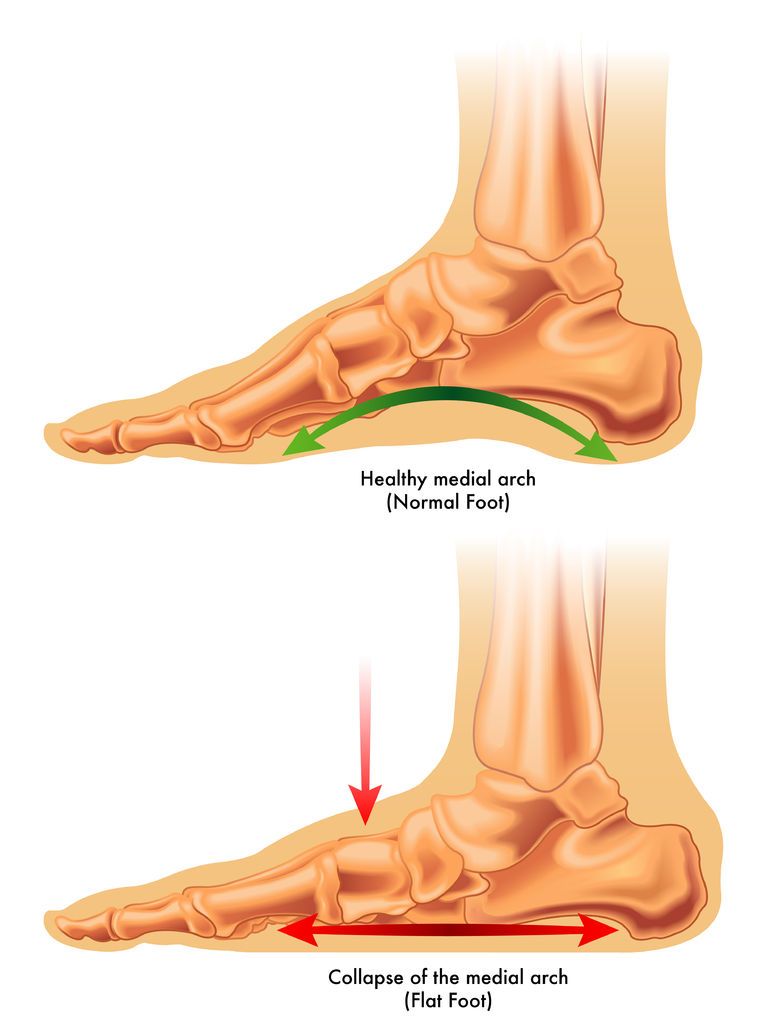FALLEN ARCHES

If you suffer from fallen arches, don’t hesitate to Schedule an appointment with one of our orthopedic specialists.
Looking at a foot from the inner side, you’ll notice an upward curve in the middle known as the arch. Tight bands of tissue known as Tendons attach the heel bone to the foot bones, forming the arch. When the tendons all pull the proper amount, then your foot forms a moderate, normal arch. When the tendons do not pull together properly, they fail to create an arch. Foot and Ankle specialists call this a “flat foot” or fallen arch. In more technical terms, some physicians know flat foot as “Pes Planus”
Causes of Flat Feet and Fallen Arches
Symptoms of Flat Feet and Fallen Arches
Many patients with Pes Planus do not present harmful symptoms and do not require treatment. Some patients with seriously fallen arches may notice:
- Their Feet “tire out” easily.
- The arches and heels of their feet feel particularly painful or achy.
- The inside bottom area of the feet swell up.
- Patients find excess foot movement difficult, such as standing tip-toe.
- Leg and back pain
Specialists urge patients to contact their physicians If they notice any of these symptoms.
Treatment for Flat Feet and Fallen Arches
The treatment plan for flat feet and fallen arches depends on the severity of the issue as well as the cause. If patients determine that their flat feet pose no difficulties, then they most likely do not need treatment. In more severe cases, Foot and Ankle Specialists may suggest the following treatments:
- Resting the feet and applying ice
- Stretching exercises and physical therapy
- Taking nonsteroidal anti-inflammatories
- Special Orthotic devices, braces, casts, or shoe inserts
- Corticosteroid injections to reduce inflammation
If patients suffer from severe pain related to fallen arches, your doctor may recommend surgery. Procedures may include the following:
- Fusing foot or ankle bones together (arthrodesis)
- Removing bones or bony growths — also called spurs (excision)
- Cutting or changing the shape of the bone (osteotomy)
- Cleaning the tendons’ protective coverings (synovectomy)
- Adding tendon from other parts of your body to tendons in your foot to help balance the “pull” of the tendons and form an arch (tendon transfer)
- Grafting bone to your foot to make the arch rise more naturally (lateral column lengthening)

